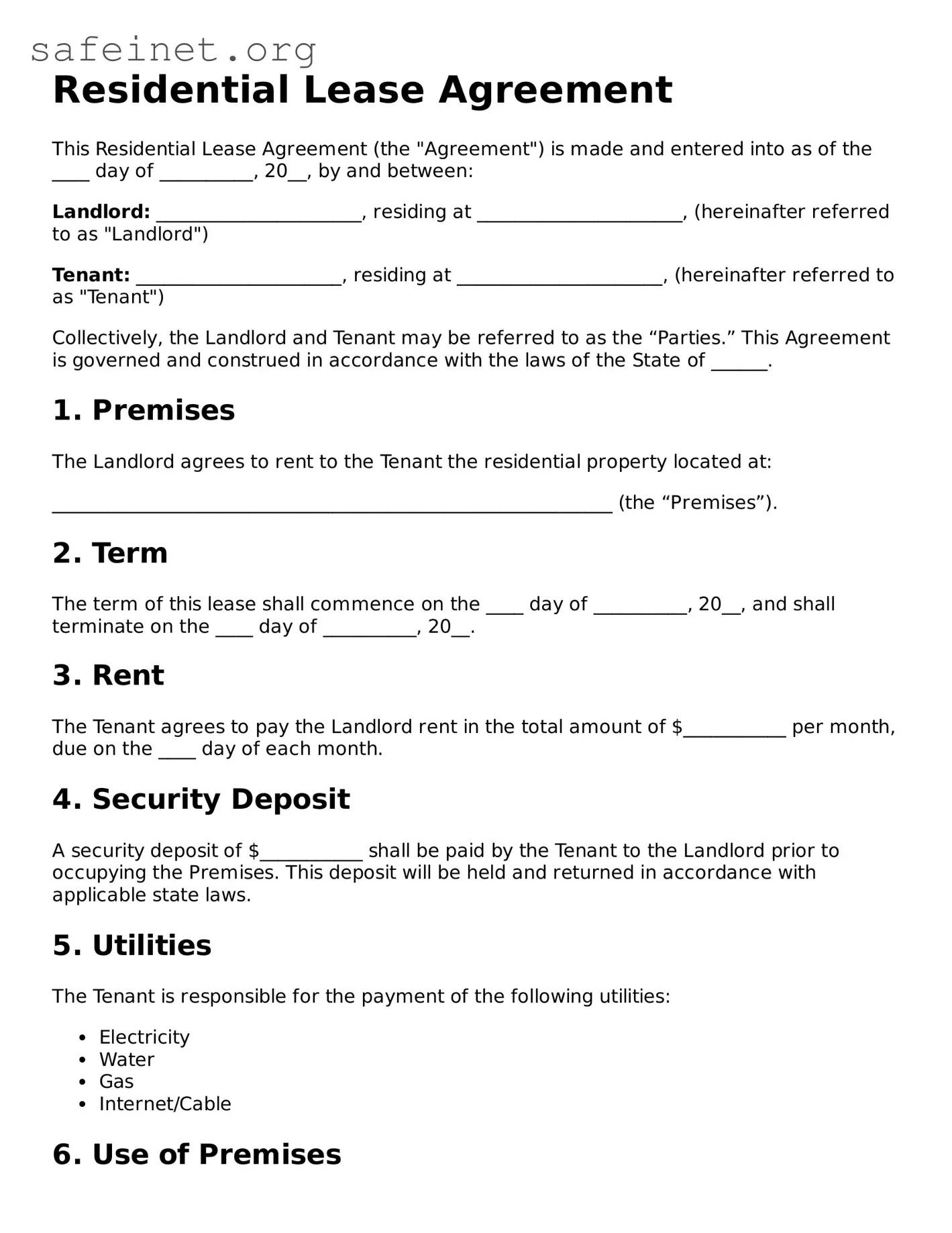Residential Lease Agreement
This Residential Lease Agreement (the "Agreement") is made and entered into as of the ____ day of __________, 20__, by and between:
Landlord: ______________________, residing at ______________________, (hereinafter referred to as "Landlord")
Tenant: ______________________, residing at ______________________, (hereinafter referred to as "Tenant")
Collectively, the Landlord and Tenant may be referred to as the “Parties.” This Agreement is governed and construed in accordance with the laws of the State of ______.
1. Premises
The Landlord agrees to rent to the Tenant the residential property located at:
____________________________________________________________ (the “Premises”).
2. Term
The term of this lease shall commence on the ____ day of __________, 20__, and shall terminate on the ____ day of __________, 20__.
3. Rent
The Tenant agrees to pay the Landlord rent in the total amount of $___________ per month, due on the ____ day of each month.
4. Security Deposit
A security deposit of $___________ shall be paid by the Tenant to the Landlord prior to occupying the Premises. This deposit will be held and returned in accordance with applicable state laws.
5. Utilities
The Tenant is responsible for the payment of the following utilities:
- Electricity
- Water
- Gas
- Internet/Cable
6. Use of Premises
The Tenant shall use the Premises solely for residential purposes and shall not engage in any illegal activities on the Premises.
7. Maintenance and Repairs
The Tenant agrees to maintain the Premises in a clean and sanitary manner. Any repairs needed should be reported to the Landlord promptly.
8. Termination
Either party may terminate this Agreement by providing written notice of ____ days in advance to the other party.
9. Governing Law
This Agreement shall be governed by and construed in accordance with the laws of the State of ______.
10. Signatures
IN WITNESS WHEREOF, the Parties hereto have executed this Agreement as of the date first above written.
Landlord Signature: ________________________________
Date: _____________
Tenant Signature: ________________________________
Date: _____________
